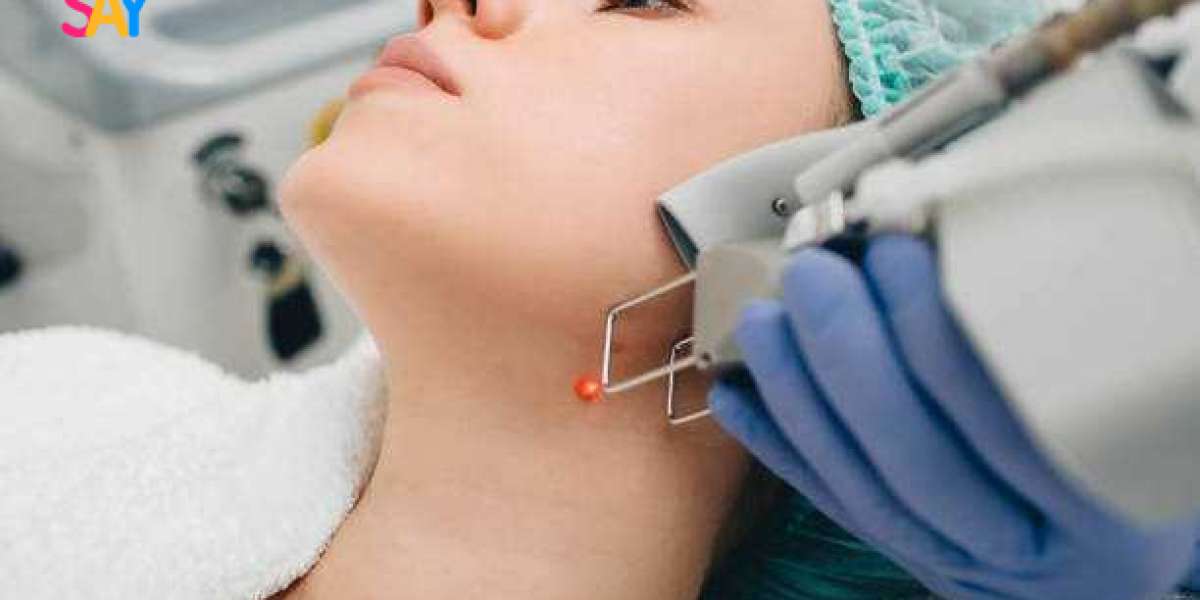Mole removal in Islamabad is a routine procedure performed for medical or cosmetic reasons. One of the most common concerns is whether the process is painful. The good news is that with modern techniques, mole removal is relatively painless and straightforward. This article will delve into the details of mole removal procedures, pain levels, and recovery tips to help you prepare.
Understanding Mole Removal Techniques:
The type of procedure used significantly affects the level of discomfort you may experience. Here are the most common methods:
1. Surgical Excision:
- Process: The mole is cut out entirely, and the area is stitched closed.
- Pain Level: Local anesthesia ensures the procedure itself is painless. Some soreness may follow during recovery.
2. Shave Excision:
- Process: A blade shaves the mole at skin level, leaving a smooth surface.
- Pain Level: Minimal discomfort during the procedure; mild tenderness afterward.
3. Laser Mole Removal:
- Process: A laser targets and breaks down mole pigments for gradual removal.
- Pain Level: Feels like tiny pricks or snaps on the skin but is generally painless.
4. Cryotherapy:
- Process: Liquid nitrogen freezes and destroys the mole.
- Pain Level: Some stinging or burning during the procedure, which subsides quickly.
What to Expect During the Procedure:
Before the procedure, your dermatologist will assess the mole and recommend the most suitable method. Local anesthesia is commonly used to numb the area, ensuring minimal to no pain. In less invasive treatments like laser or cryotherapy, anesthesia may not be necessary.
The procedure itself is usually quick, lasting 15 to 30 minutes. Most patients report feeling only slight pressure or a mild sensation during treatment.
Pain and Recovery After Mole Removal:
Post-procedure discomfort is generally mild and temporary. Here’s what you might experience:
- Excision Methods: A sensation of tightness or tenderness, manageable with over-the-counter pain relief.
- Laser or Cryotherapy: Mild redness or irritation that subsides within a few days.
Recovery Tips:
- Follow Aftercare Instructions: Keep the area clean and avoid rubbing or scratching.
- Use Pain Relievers: Medications like ibuprofen can reduce any lingering soreness.
- Avoid Sun Exposure: Protect the treated area with sunscreen or bandages to prevent pigmentation changes.
How to Minimize Discomfort:
- Choose an Experienced Specialist: Skilled professionals can ensure a smooth, painless procedure.
- Discuss Concerns: Let your doctor know if you’re anxious or have a low pain tolerance. They can adjust numbing agents accordingly.
- Follow Up: Regular checkups help monitor healing and address any concerns early.
Are There Any Risks?
While mole removal is generally safe, some risks include:
- Infection
- Prolonged soreness
- Scarring
These risks are rare and can be minimized by choosing a qualified practitioner and following aftercare recommendations.
Conclusion:
Mole removal is a simple and low-pain procedure, thanks to advancements in medical technology. Whether you choose surgical excision, laser treatment, or cryotherapy, most discomfort is temporary and easily managed. By understanding the process and following proper aftercare, you can achieve excellent results with minimal downtime.
For more information visit Dynamic Clinic PK.




